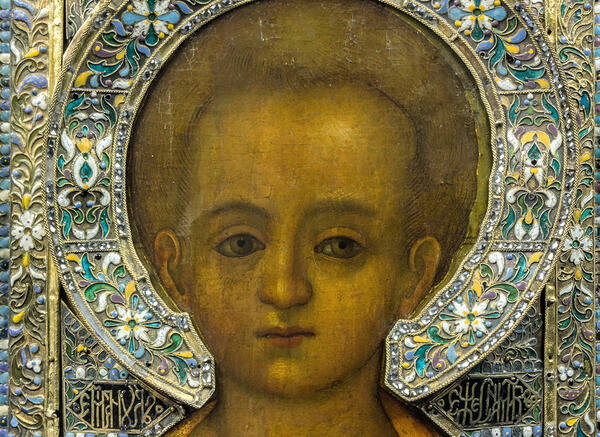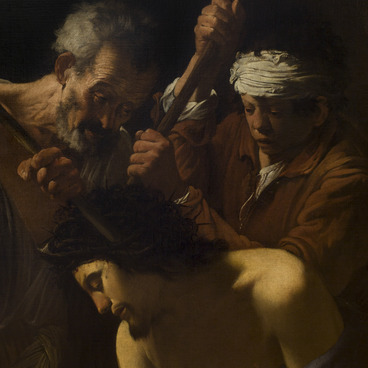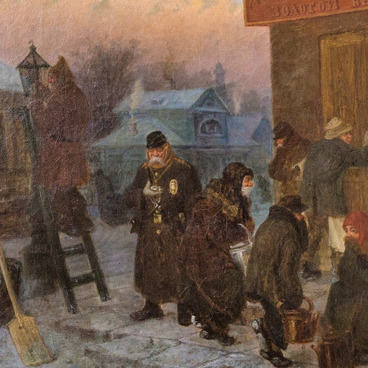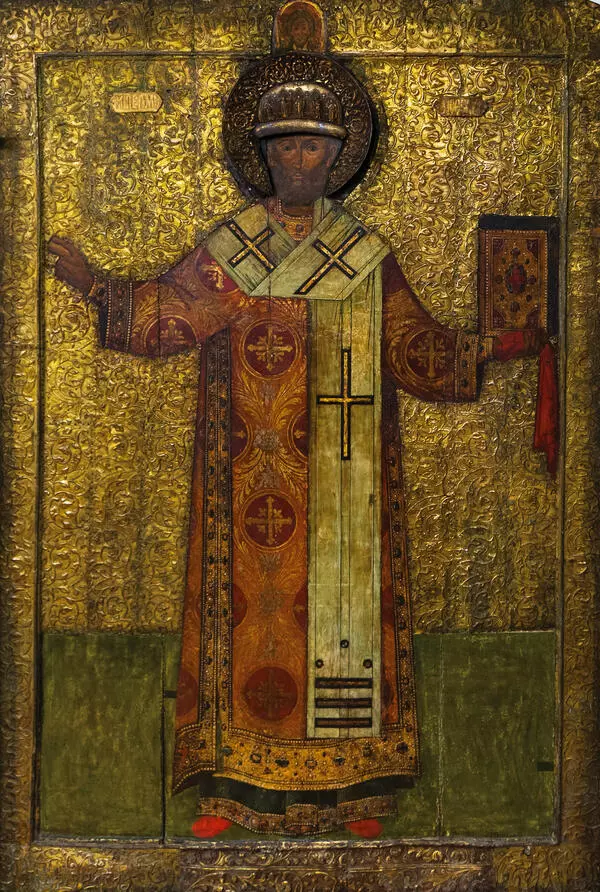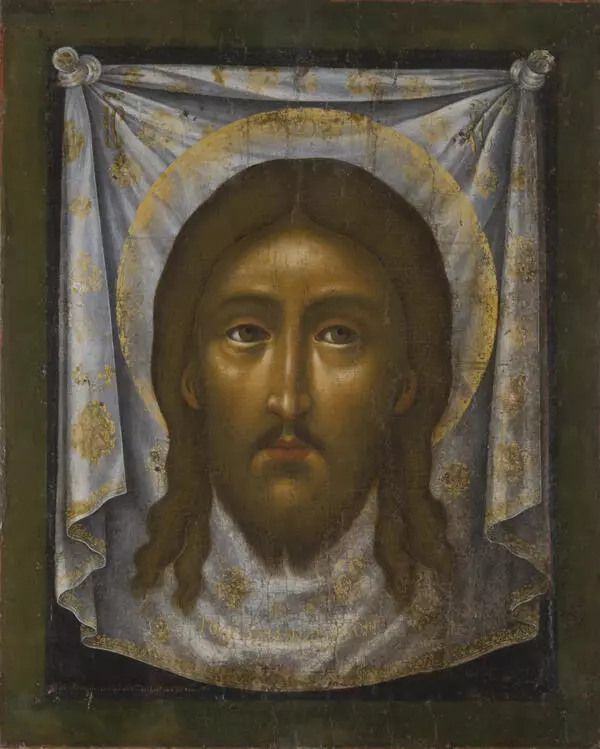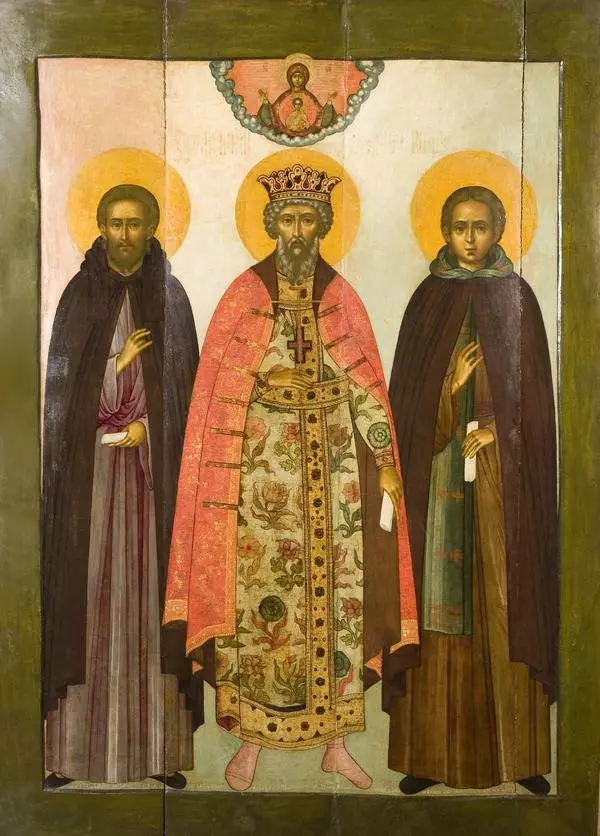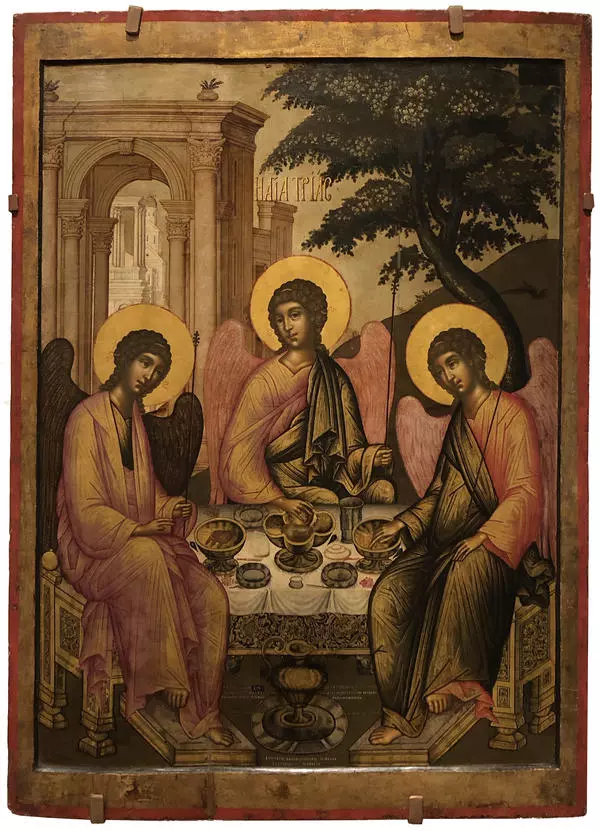Emmanuel, translated from the Hebrew language as ‘God is with us’, is one of the names of God the Son, mentioned in the book of the prophet Isaiah,
Christ Emmanuel
Creation period
the 1670s
Dimensions
32x25 cm
Technique
wood, levkas, tempera, metal, сloisonné, glass
Exhibition
3
Open in app#10
Christ Emmanuel
#12
#13
Therefore the Lord himself shall give you a sign; Behold, a virgin shall conceive, and bear a son, and shall call his name Immanuel.
#2
The Emmanuel iconographic type is traditionally associated with the image of the young Christ, a symbol of purity and chastity.
In the art of the Byzantine Empire and Old Rus’, the images of Christ Emmanuel are rare. Small shoulder-length icons of this type became widespread in the second half of the 17th — early 18th centuries. They could be included in three-part compositions, where the figure of the young Christ was flanked by the Archangels Michael and Gabriel.
Simon Ushakov, the most famous icon painter of the 17th century, painted the image of Emmanuel several times. For many years, he headed the icon-painting workshop of the Armory Chamber of the Moscow Kremlin. Simon Ushakov became the founder of a “life-like” style in icon painting. The faces painted in this manner are warm and luminous. Ushakov sought to depict the Divine light emanating from the faces. Compared to the works of Andrei Rublev or Dionysius, the images in the icons of Simon Ushakov are less conventional, more true-to-life and vivid.
The master worked in a very complicated technique: he applied many layers of translucent tempera — mineral paint made of egg yolk, liquid glue, honey and other emulsions. The icon painter sought to create volume, light and particular smoothness. The image of Emmanuel enabled Ushakov to focus on the depiction of the face of Christ and to apply new artistic principles of the life-like style.
About fifty icons signed by Simon Ushakov have survived to our days. The work from the collection of the Irkutsk Art Museum belongs to the period when the icon painter’s art reached its climax. In the icon, Christ wears an orange-ocher chiton and a hymation — a cloak worn over the left shoulder on top of the chiton. The clothes are rendered with the technique of gold assist — lines and highlights drawn in thin parallel lines. The revetment of the icon is made with the help of сloisonné technique. In the upper corners of the centerpiece is the monogram of Christ, above the shoulders are the inscriptions, which can be translated as
In the art of the Byzantine Empire and Old Rus’, the images of Christ Emmanuel are rare. Small shoulder-length icons of this type became widespread in the second half of the 17th — early 18th centuries. They could be included in three-part compositions, where the figure of the young Christ was flanked by the Archangels Michael and Gabriel.
Simon Ushakov, the most famous icon painter of the 17th century, painted the image of Emmanuel several times. For many years, he headed the icon-painting workshop of the Armory Chamber of the Moscow Kremlin. Simon Ushakov became the founder of a “life-like” style in icon painting. The faces painted in this manner are warm and luminous. Ushakov sought to depict the Divine light emanating from the faces. Compared to the works of Andrei Rublev or Dionysius, the images in the icons of Simon Ushakov are less conventional, more true-to-life and vivid.
The master worked in a very complicated technique: he applied many layers of translucent tempera — mineral paint made of egg yolk, liquid glue, honey and other emulsions. The icon painter sought to create volume, light and particular smoothness. The image of Emmanuel enabled Ushakov to focus on the depiction of the face of Christ and to apply new artistic principles of the life-like style.
About fifty icons signed by Simon Ushakov have survived to our days. The work from the collection of the Irkutsk Art Museum belongs to the period when the icon painter’s art reached its climax. In the icon, Christ wears an orange-ocher chiton and a hymation — a cloak worn over the left shoulder on top of the chiton. The clothes are rendered with the technique of gold assist — lines and highlights drawn in thin parallel lines. The revetment of the icon is made with the help of сloisonné technique. In the upper corners of the centerpiece is the monogram of Christ, above the shoulders are the inscriptions, which can be translated as
#11
Emmanuel/ God is with us.
#8
Ministry of Culture of the Russian Federation
read morehide
00:00
00:00
1x
Christ Emmanuel
Creation period
the 1670s
Dimensions
32x25 cm
Technique
wood, levkas, tempera, metal, сloisonné, glass
Exhibition
3
Open in app
Share

